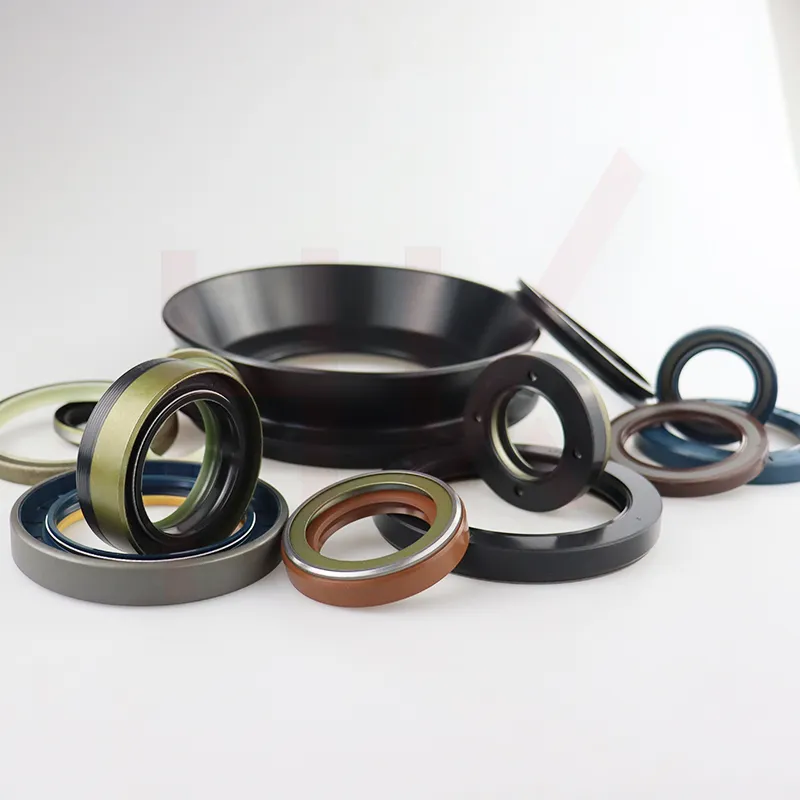دېكابىر . 04, 2024 17:20 Back to list
hydraulic cylinder repair seals
Hydraulic Cylinder Repair Seals Essential Mechanics for Longevity and Efficiency
Hydraulic cylinders are integral components in a myriad of industrial applications, facilitating the transfer of power through fluid pressure. These powerful devices convert hydraulic energy into mechanical energy, enabling heavy machinery to perform essential tasks ranging from lifting and pushing to clamping and moving. However, like any mechanical apparatus, hydraulic cylinders are prone to wear and tear, leading to leaks and reduced performance. This is where hydraulic cylinder repair seals come into play, acting as the linchpin in maintaining the efficiency and longevity of hydraulic systems.
Understanding Hydraulic Cylinder Seals
Hydraulic seals are critical components designed to prevent the leakage of hydraulic fluid, ensuring that the pressure generated within the cylinder is maintained. They also protect the internal components from dirt, contaminants, and moisture, which can significantly impact operational efficiency. Seals can be classified into various types, including rod seals, piston seals, and buffer seals, each serving a unique purpose within the hydraulic system.
1. Rod Seals These are located at the end of the cylinder, sealing the rod as it moves in and out of the cylinder. The primary function of rod seals is to prevent fluid from escaping the chamber while also preventing contaminants from entering the system. A well-functioning rod seal ensures that the hydraulic cylinder remains efficient and responsive.
2. Piston Seals Positioned on the piston itself, these seals prevent fluid from leaking past the piston, allowing the cylinder to generate force effectively. Piston seals are critical for managing pressure differences between the two sides of the piston, ensuring proper functionality and performance.
3. Buffer Seals These seals serve as a secondary line of defense, protecting the primary seals from wear and potential damage due to fluctuations in pressure or contamination. Buffer seals are particularly important in applications where the hydraulic system experiences significant changes in load or pressure.
Importance of Regular Maintenance
The longevity of hydraulic cylinders heavily relies on the maintenance of their seals. Wear and tear can lead to inefficiencies, characterized by a drop in performance, increased energy consumption, and potential downtime. Regular inspection and timely replacement of damaged or worn seals are essential practices to prevent catastrophic failures. Implementing a regular maintenance schedule not only helps in identifying potential issues before they escalate but also contributes to the overall health of the hydraulic system.
Identifying Seal Failure
hydraulic cylinder repair seals

As critical components, hydraulic seals can exhibit signs of failure that operators should be vigilant about. Common indications of seal failure include
- Fluid Leakage Noticeable puddles or stains around the hydraulic cylinder are primary indicators of seal failure. This leakage can severely impact the efficiency of the system and should be addressed promptly.
- Reduced Performance If the hydraulic system is experiencing sluggish operation or reduced lifting capacity, it may signal that the seals are no longer functioning optimally.
- Increased Noise Abnormal sounds such as grinding or squeaking during operation may suggest that the seals are worn and failing to keep the hydraulic fluid contained.
Choosing the Right Seals
When it comes to selecting seals for hydraulic cylinder repair, several factors must be considered. Choosing the appropriate material is crucial. Common materials for hydraulic seals include nitrile rubber, polyurethane, and fluorocarbon, each offering different benefits in terms of temperature resistance, pressure tolerance, and chemical compatibility. Operators must assess their specific application needs to ensure that the selected material can withstand the operating environment.
In addition to material, the design of the seal can also impact performance. Factors such as seal profile, size, and type should be tailored to the specific hydraulic system requirements for optimal results.
Conclusion
Hydraulic cylinder repair seals are vital components that directly influence the performance and reliability of hydraulic systems. By understanding the different types of seals, recognizing signs of failure, and prioritizing maintenance, operators can significantly enhance the longevity and efficiency of their hydraulic machinery. Investing in high-quality seals and adhering to a rigorous maintenance routine can lead to uninterrupted operations and substantial cost savings in the long run, ensuring that hydraulic systems continue to perform at their best.
-
The Trans-formative Journey of Wheel Hub Oil Seals
NewsJun.06,2025
-
Graphene-Enhanced Oil Seals: Revolutionizing High-Pressure Oil Sealing
NewsJun.06,2025
-
Future of Hydraulic Sealing: Advanced Intelligent TCN Oil Seals
NewsJun.06,2025
-
Don’t Let a Broken TCV Oil Seal Ruin Your Day
NewsJun.06,2025
-
Bio-Inspired Dust Seals for Better Sealing Performance
NewsJun.06,2025
-
Biodegradable and Sustainable Hydraulic Seal Materials
NewsJun.06,2025
-
Top Oil Seal Solutions for Your Industrial Needs
NewsMay.22,2025
Products categories
















